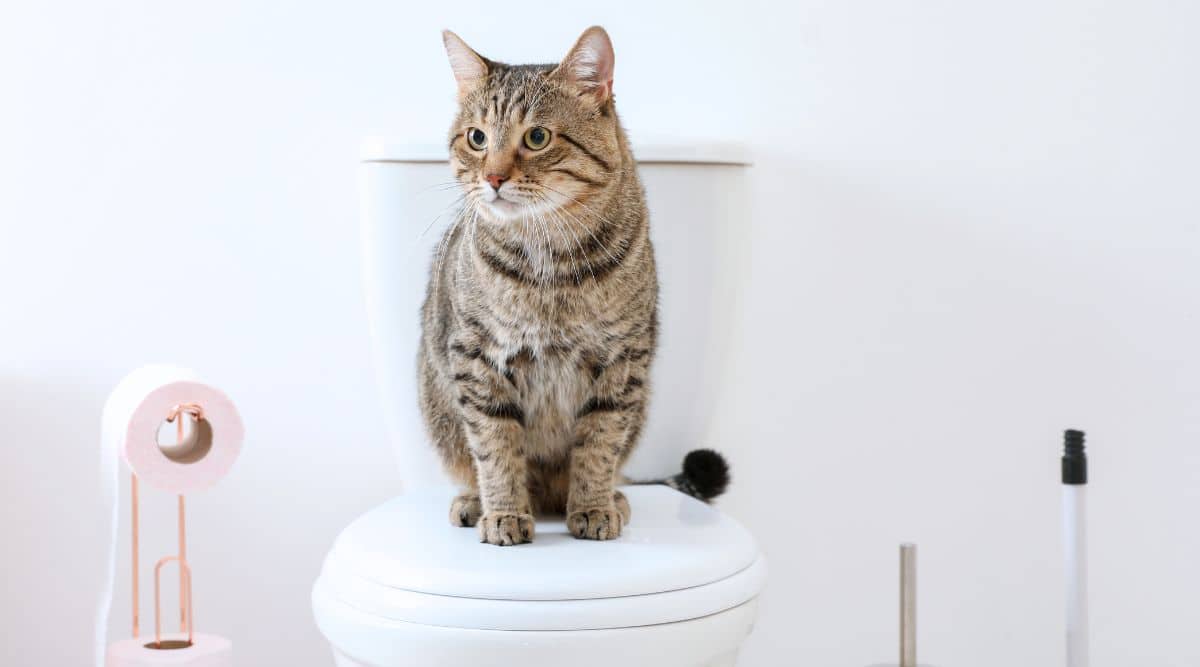Why Flushing Cat Poop Down Your Toilet Isn't a Good Idea - Tips for Proper Handling
Why Flushing Cat Poop Down Your Toilet Isn't a Good Idea - Tips for Proper Handling
Blog Article
Right here down the page you will find lots of professional information and facts on the subject of Don’t flush cat feces down the toilet.

Introduction
As pet cat proprietors, it's necessary to bear in mind just how we take care of our feline buddies' waste. While it may appear convenient to flush feline poop down the commode, this method can have detrimental effects for both the atmosphere and human wellness.
Environmental Impact
Purging cat poop presents hazardous virus and parasites into the water, positioning a substantial risk to aquatic ecological communities. These contaminants can negatively affect aquatic life and concession water quality.
Health and wellness Risks
Along with ecological problems, purging cat waste can also position health and wellness dangers to people. Feline feces might consist of Toxoplasma gondii, a bloodsucker that can trigger toxoplasmosis-- a possibly serious health problem, especially for expecting ladies and individuals with weakened body immune systems.
Alternatives to Flushing
Thankfully, there are safer and a lot more liable means to get rid of feline poop. Consider the following choices:
1. Scoop and Dispose in Trash
One of the most common approach of disposing of pet cat poop is to scoop it into an eco-friendly bag and toss it in the trash. Make sure to use a committed trash inside story and get rid of the waste promptly.
2. Usage Biodegradable Litter
Opt for naturally degradable pet cat litter made from products such as corn or wheat. These litters are environmentally friendly and can be securely dealt with in the garbage.
3. Hide in the Yard
If you have a yard, think about hiding pet cat waste in a designated area away from veggie yards and water resources. Be sure to dig deep enough to prevent contamination of groundwater.
4. Set Up a Pet Waste Disposal System
Purchase a family pet garbage disposal system especially designed for cat waste. These systems use enzymes to break down the waste, reducing odor and ecological influence.
Verdict
Liable pet dog possession prolongs beyond offering food and shelter-- it additionally entails appropriate waste administration. By refraining from purging pet cat poop down the bathroom and choosing different disposal approaches, we can reduce our environmental impact and safeguard human health.
CAN I FLUSH MY CAT'S POOP DOWN THE TOILET?
Always avoid flushing cat poop down the drain because not only could it potentially contain harmful parasites called toxoplasmosis, the litter could sit in your line and lead to a clog.
Plenty of waste gets flushed down your toilet every day, so what harm could a little cat poop and cat litter do? The answer is a lot, which is why you never want to send it down your drains.
Can I Flush My Cat's Poop Down The Toilet?One of the biggest problems with flushing your cat’s presents is the harmful parasites in your feline’s stool called toxoplasmosis. Extremely dangerous for humans, especially pregnant women and people who are immunocompromised, these parasites can cause a multitude of problems for unborn babies and even cause death or miscarriage if the infection happens early. That’s why you should always avoid touching cat poop. Also, water systems are not equipped to handle toxoplasmosis and are unable to destroy the parasite before it’s sent back into the environment, potentially jeopardizing the health of local area wildlife, specifically marine life.
Flushing cat poop could also lead to a future drain clog. Try as you may to eliminate any litter from it, there will always still be some stuck on there – and even if it says flushable on the label, it’s not! Cat litter is made up of bentonite clay, which has the tendency to harden when wet, creating a thick, almost cement-like quality. Cat litter that ends up down the drain can expand from the moisture in the pipes and then harden, blocking any wastewater. If you have a septic tank or a cesspool, it cannot handle cat litter either, no matter what kind. If it solidifies in the tank, in any of the system’s major parts like the inlet baffle, it’ll create some expensive problems.
The best way to dispose of cat poop safely is to scoop it into a bag and throw it into the trash – and ways of dealing with the smell include adding baking soda and replacing the box more.
Now that we’ve explained the potential harm that flushing cat poop can cause to you and your drains, you might be wondering the best way of dealing with it. Unfortunately, it’s the old-fashioned way of scooping it into a bag and then placing it into a trash can. They also make pet-proof trash cans that lock in the smell, so that you don’t have to always immediately take it out. If you’re tired of smelling the litter box after even just one use from your feline, there’s things you can do to help combat that smell. Adding baking soda to the litter will reduce smells, but just don’t add too much or your cat will no longer want to use the box. You could also replace the box more frequently, at least once a year, as those smells can just seep inside the scratch marks. Lastly, try changing to a new litter formula – some are better with smells than others.

I ran across that blog posting about How to Dispose of Cat Poop and Litter Without Plastic Bags while surfing around the web. Sharing is good. You won't know, you may very well be doing someone a favor. Thank-you for going through it.
Get Estimate Report this page